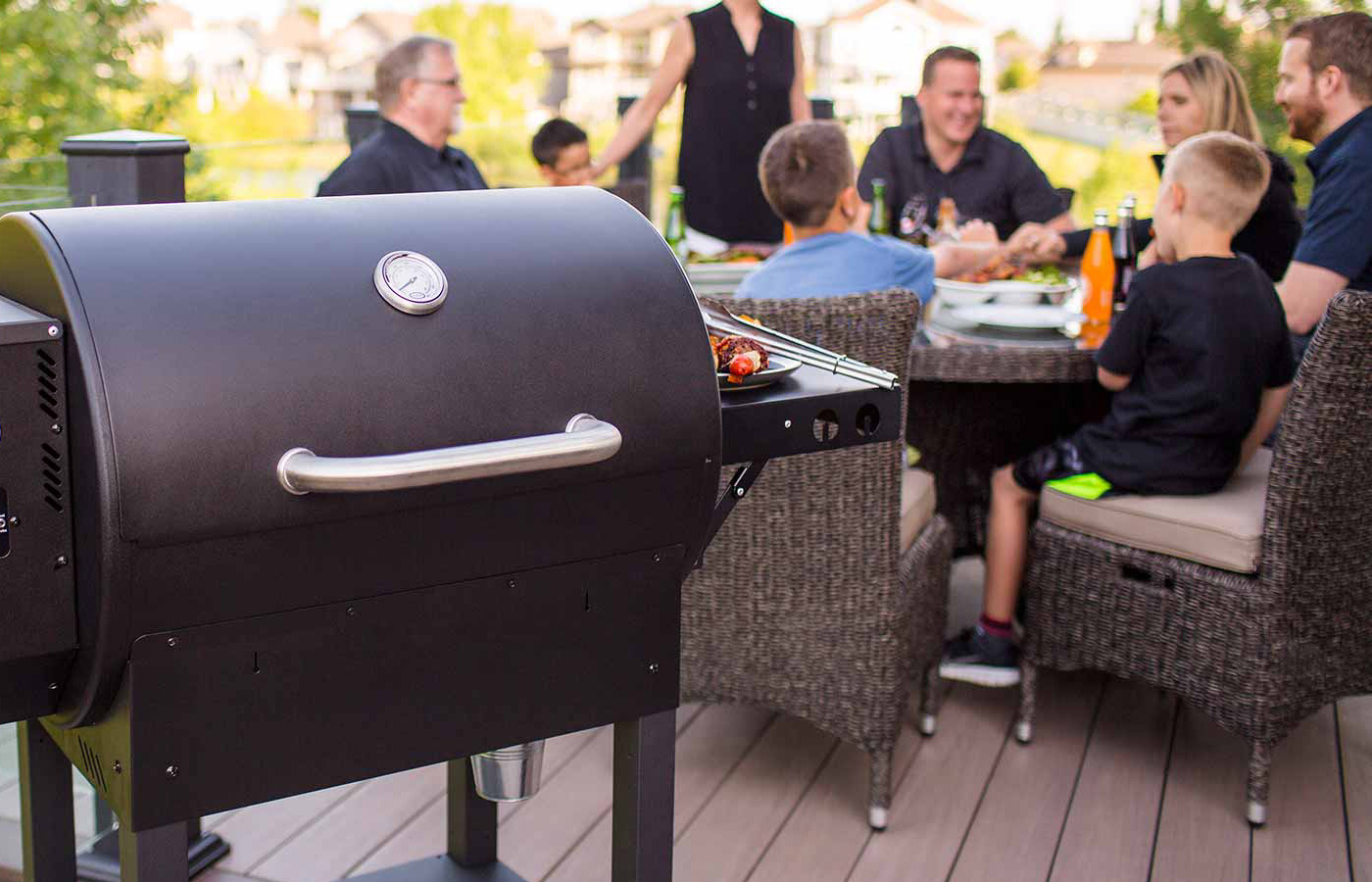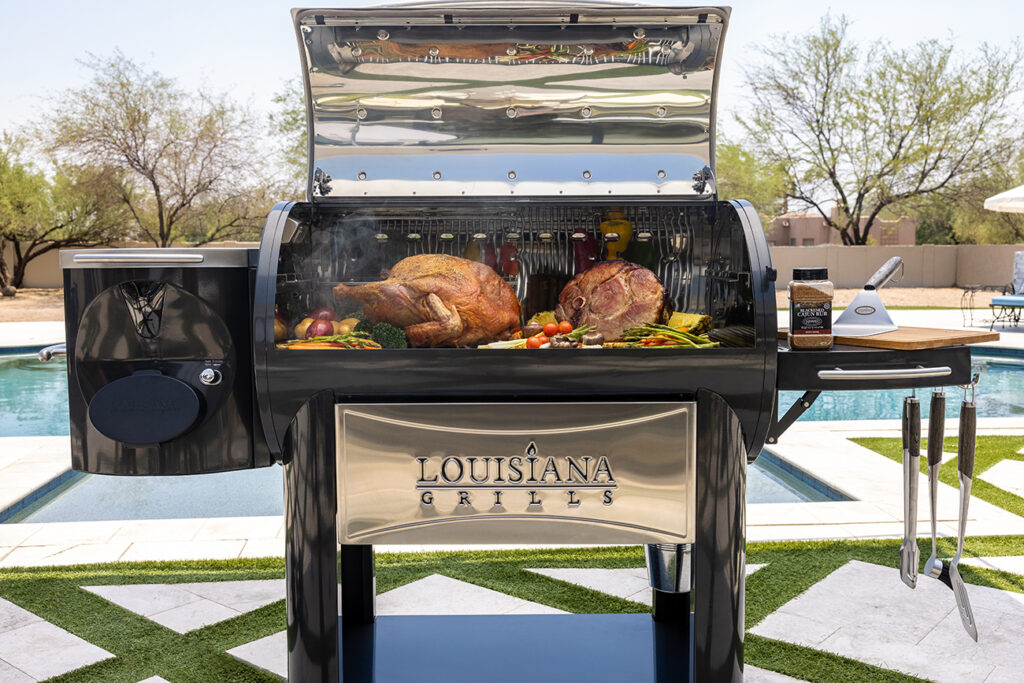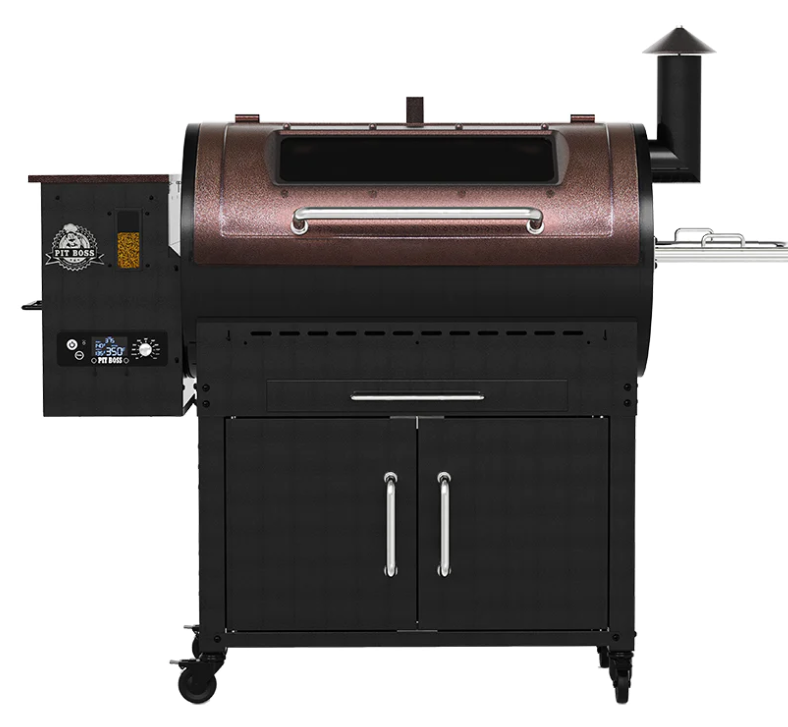Any grillman knows that a lit grill brings a crowd of hungry friends and family ready to be fed. And you might feel the pressure to impress or find ways to improve your meat smoking game, especially when your list of guests grows bigger every year.
Good news is there’s plenty of easy, simple tips and tricks that go a long way for getting delicious results, as well as carving your place in your neighborhood as king of the grill!
Smoking Meats for a Crowd
First and foremost, great home smoking begins with your ability to cook for crowds! Or at least larger gatherings than your typical family dinner…
Consider the size of your smoker (or one you might plan on purchasing) to anticipate the largest cuts of meat you can cook, and how many at once. This essentially limits plate count if this is the core entree for your gathering.
The more you can cook, the greater the amount of mouths you can feed, which will very well turn into heaps upon heaps of praises for your smokey kindnesses.
Stock up on recipes involving larger cuts of meat which will feed more guests, such as smoked turkey or ham.
Whole Smoked Turkey
Known to feed plenty, this Thanksgiving classic is a wonderful way to explore larger-portion meat smoking. Smoke it with hickory or mesquite wood chips and you’ll sure have a crowd pleaser straight out of your grill.
Prepare your turkey with brine to retain moisture. Brine is simply salt water, but you can add herbs and spices for a kind of marinade. Let it soak in the brine for 10-12 hours before you begin smoking it.
Cook the whole turkey at about 30 minutes per pound between 225 and 250 degrees; finish at 165 degrees in the breast, or 180 degrees in the largest area of the thigh.
Smoked Ham
Another recipe known for its endless portions is smoked ham. You and your guests are surely in for a treat once you’ve flavored your ham in the smoke of burning apple, maple, or cherry wood chips.
If your cut of ham isn’t pre-cooked or cured, then you’ll need to let it soak in a brine for one day per pound. The brine pulls moisture out of the meat and infuses it with the flavor of your brine (at least salt, but you may add spices).
Between 225 to 250 degrees, smoke the ham until it reaches an internal temperature of about 130 to 140 degrees, but don’t exceed that unless you want a dried-out ham!
If you plan to glaze your ham, lather your glaze when it reaches an internal temperature of 130 degrees, then let it continue to smoke until 140 degrees. Add more glaze and remove it. Let it sit for at least ten minutes prior to serving.
Become a Better Smoker
You may not have the best kind of smoker grill out there, but if you know how to use what you’ve got well, you don’t need an expensive piece of hardware to make excellent smoked dishes.
Here are some quintessential smoking tips that’ll tighten up your meat smoking skills and surely help you on your way to becoming the best home meat smoker in town.
Know What You’re Cooking
Different meats and cuts call for different times and temperatures. You’ll need to do some research before you fire up your smoker and throw on a cut of meat or even a basket of veggies. Plus, there are plenty of wood chips to choose from, and knowing which goes well with what meat takes some time to consider as well.
Save yourself from wasting your money, meat, fuel, wood, and time on a disaster ahead of time by taking some time to research your recipe first.
Use Your Thermometer, Not Your Watch
It’s more important that your meat reaches a safe internal temperature than how long it’s been smoking. If you’re smoking slowly and steadily, then you won’t have to worry about easily over or under cooking your food. Just keep watch until it reaches the standard USDA temperature for your particular meat, and go from there.
Some smokers aren’t as consistent in their cooking process as other smokers, so it’s difficult to cook based on an exact amount of time as specified by your recipe.
Go by the internal temperature of your meat!
Clean Your Grill
This should go without saying… As boring as it is, it maximizes the quality and purity of your meats and veggies you cook. Did you want the char of last week’s fish to compliment this week’s beef? Didn’t think so!
It’s better to be safe than sorry for spoiling what would’ve been a great cut of smoked meat!
5 Secrets to Becoming the Best Smoker in Your Neighborhood
Here are five secrets for taking your meat smoking to the next level and becoming your neighborhood’s favorite home smoker.
- Open Your Lid Sparingly: Smoking relies on consistency of both temperature and smoke density within your smoker, and opening it disrupts it. Keep your smoking stable by keeping your lid shut as much as possible.
- Go Slow at Low Temperature: When smoking, slow and low cooking breaks down all the fats and hard tissue into that perfect melt-in-your-mouth cut of meat. This method also keeps you from easily over or undercooking your food, as well as gives enough time for your wood smoke to thoroughly flavor it.
- Let Your Meat Crust: By the time you finish smoking, your meat should have a dark “bark” layer covering it. This is good as it is the caramelizing of fat, spices, and smoke – the flavoring and texture you should expect from smoked meat. It means you’ve done well!
- Keep Your Food Moist: Your smoker may have a water pan already in place to aid in retaining moisture in your meats, but you can also spray your meat every couple of hours with a concoction that’s equal parts apple cider vinegar and water.
- Go Easy on the Smoke: A rookie mistake is to put too much wood in your smoker and therefore over-smoke your meats. Take your time, adding a few chips (or chunks) here and there to maintain a gentle white smoke leaving your smoker.
Conclusion
The companies we review and mention provide state-of-the-art pellet grilling technologies and top quality smoking supplies, getting you the best flavor out of your meats and veggies. Don’t settle for less than what you and your guests’ palates deserve.





